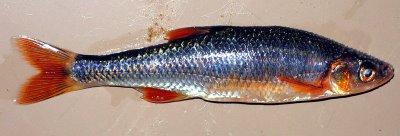Is a healthy ecosystem one that is rich in parasites?
I stole this entry's title from a still-unpublished paper by Hudson, Dobson and Lafferty that will soon appear in one of my fave journals, Trends in Ecology and Evolution (TREE). The three authors have worked on a variety of ecological questions with parasites, such as how do they affect their host populations, affect their host's predators, affect their host's food items and environment, and thus how might parasites shape community structure and energy flow within ecosystems. Their single most interesting observation is that if one counts parasite species in biodiversity analyses, the number of species ("biodiversity") doubles. But this is rarely the case because parasites are still fairly obscure taxonomically.
For my own work this is an astounding thought. Like I've mentioned before, I'll be participating in a Bio Blitz this coming weekend at the Walls of Jericho tract in Jackson County, Alabama. My part will be working to identify how many fish species are on the property, especially in Hurricane Creek. That's fairly cut and dried, identifying the various cyprinids, suckers, darters, etc. I predict that we'll find about 30 species of fish in that creek if we're able to electroshock and ID some of the more athletic species like redhorse. But I know from my ongoing research that it's a reasonable assumption that every local freshwater fish species has at least one species of Dactylogyrus monogenean gill parasite endemic to the host, and that doesn't count various nematodes and acanthocephalans that are probably endemic to the guts of each fish species. So right there we're talking 120 species, starting with the original 30 fish species. I may have to keep voucher samples of all fish species found and attempt at least Dactylogyrus ID's in the lab, to give a more accurate species total. (I hope you don't think that I'm a totally lost obsessive compulsive....)
So the lesson here is that a biodiverse, healthy, dynamic ecosystem is one rich in parasite diversity, which is a powerful regulator of community diversity. That's contrary to typical thought.







